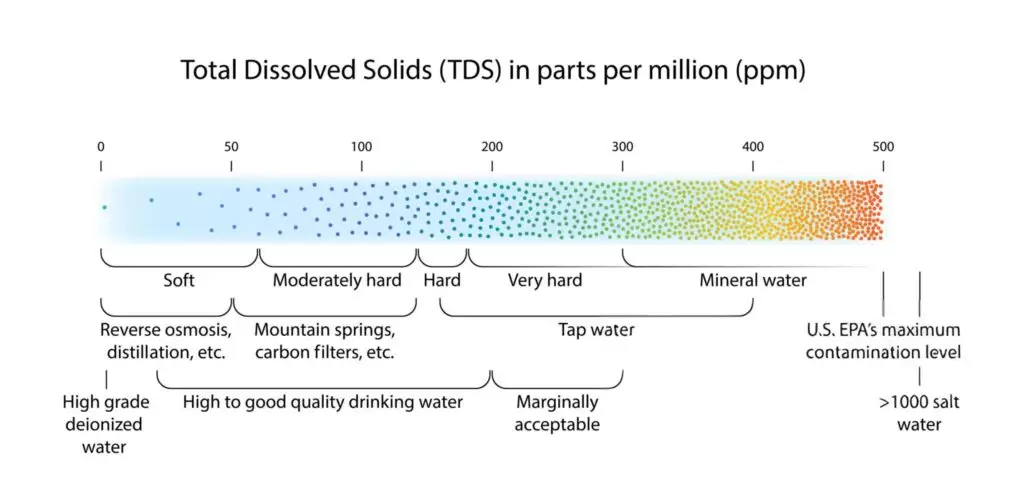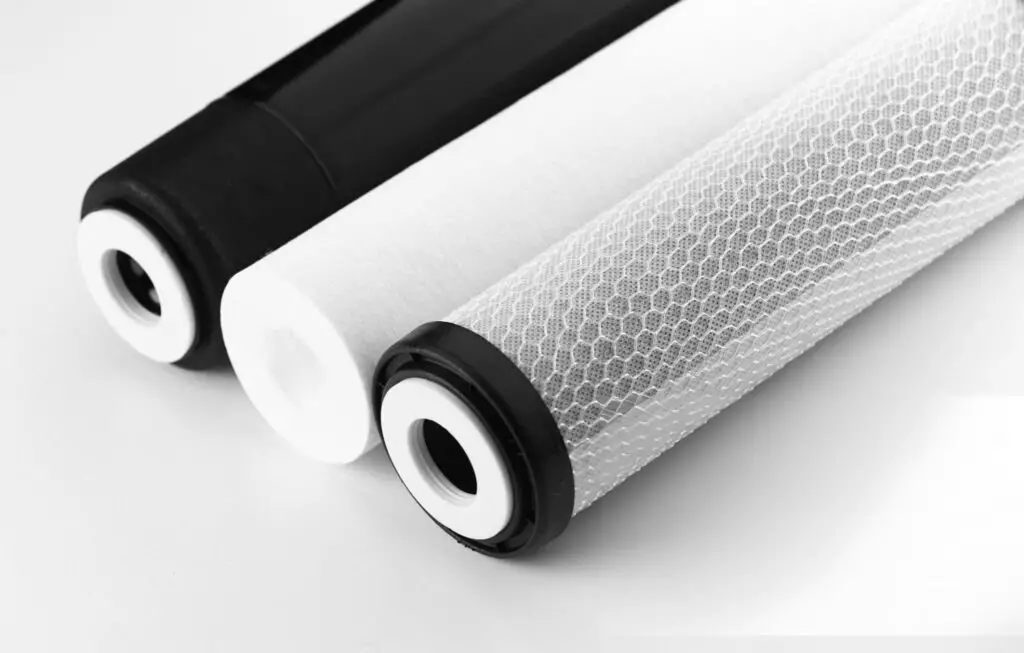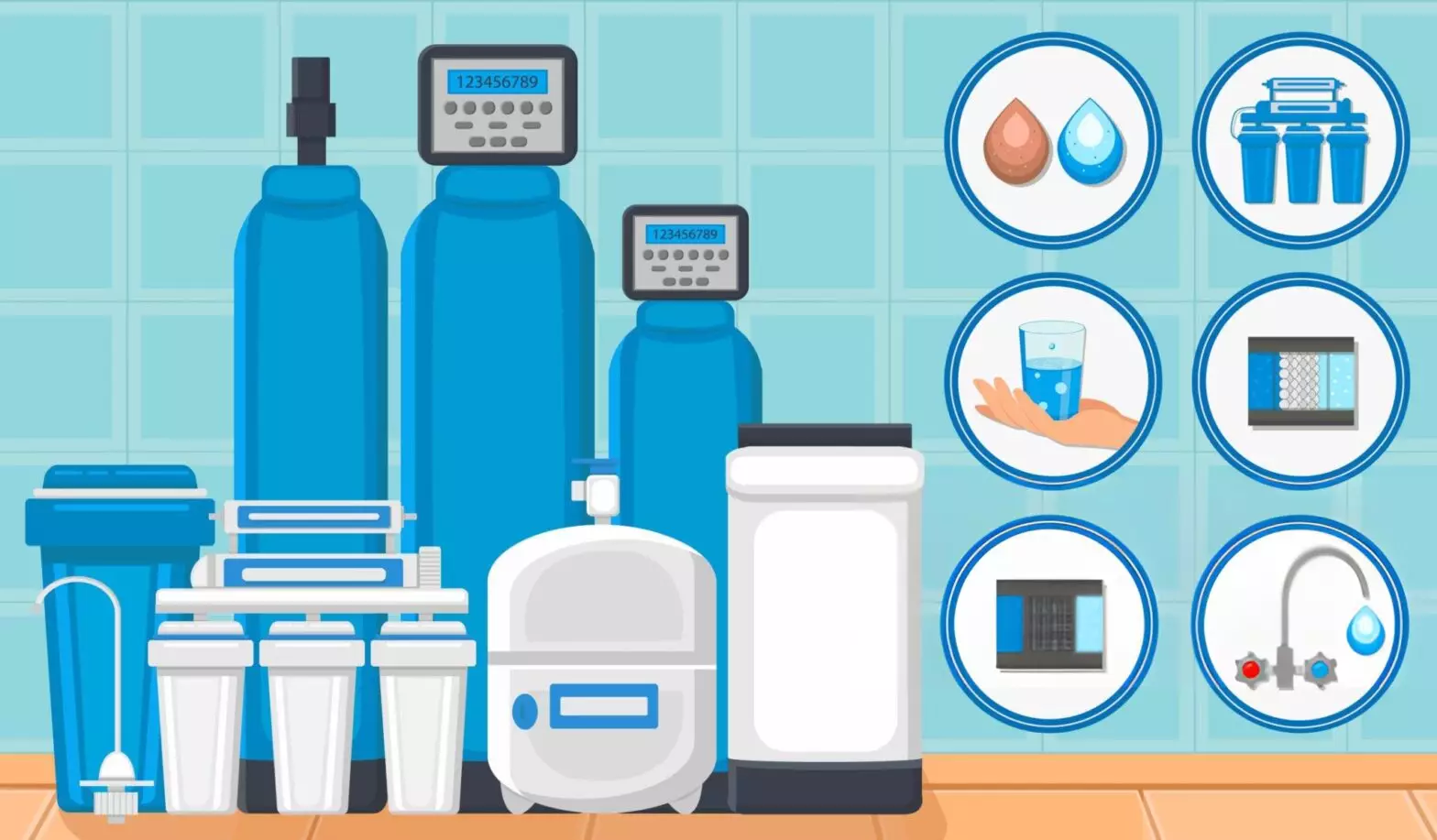Introduction to Hydroponic Reverse Osmosis Systems
One of the primary limiting factors of any hydroponic system is the quality of the water used to create the nutrient solution. Excessive amounts of contaminants, minerals, and pathogens can lead to sub-optimal results. Everyone from regular people looking for clean drinking water to farmers looking to maximize their yields and make their crops flourish, have turned to hydroponic reverse osmosis systems to generate pure water for their nutrient solution. But how does reverse osmosis work?
For the uninitiated, Hydroponics, a subset of hydro-culture, promotes the growth of plants in a soil-less medium or an aquatic based environment. Rather than harnessing the nutrients from soil, hydroponic systems utilize mineral nutrient solutions in water, providing a controlled environment for plant cultivation. This system offers promising advancements in crop production, including increased productivity and decreased disease propagation. Hydroponics can use 90% less water than traditional farming. However, hydroponics is only as effective as the quality of water used, leading to the integration of reverse osmosis systems.

Commercial ro water systems offer a superior level of water treatment for hydroponic systems. Reverse osmosis is a process that uses a partially permeable membrane to remove ions, unwanted molecules, and larger particles from water, providing the purest form of water available to the average person. With the implementation of a commercial reverse osmosis system, growers can safeguard against contaminants that may be present in the water, thus aiding in their high-quality crop production.
Commercial reverse osmosis integrated with hydroponic systems paves the way for producers to pair higher yields with the lower water usage of hydroponics, thereby driving sustainable farming practices. The RO system’s waste water can potentially be used for other crops or livestock. This introduces a groundbreaking shift in traditional farming methodologies, making the reverse osmosis system for hydroponics an efficient solution for high-quality crop production.
How Reverse Osmosis Works, Basically
The process of Reverse Osmosis (RO) in hydroponics is essentially a series of water filtration stages. At its most basic, the method involves forcing water through a semi-permeable membrane, known as an RO membrane, under high pressure, which aids in the removal of contaminants and impurities. Reverse osmosis is one of the most effective filtering systems and it can exclude particles as small as 0.001 microns, making it particularly effective in improving water purity and quality for hydroponics.
The critical advantage of this filter system lies in its ability to remove a wide variety of contaminants, including heavy metals, salts, and other dissolved solids, which may impede the growth of hydroponic crops. Reverse osmosis filters can remove up to 99% of these damaging contaminants, providing crops with the purest water source possible. This multi-step filtration process produces water that causes less stress on plants and a higher crop yield in hydroponic farms. Water quality is crucial in hydroponics, and the use of an RO filter system can significantly improve the nutrient uptake and overall health of crops.

As I mentioned earlier, RO systems produce “clean water” by sending a nearly all of the minerals out with what is called waste water. Depending on the mineral concentration in your tap water, you’ll use 2 to 3 gallons of water to produce one gallon of nearly pure water. Systems with capacity range around “1000 gallons per day” (GPD) will use 2000 to 3000 gallons of water.
An RO membrane is much more efficient with warmer water sources. Many filter systems are measured with hot water, and slow down significantly at cooler water temperatures. Use our RO Flow Rate Calculator to adjust the water temperature for your system. RO Filter’s produce much more water with warmer source water. The difference of using 77°F water and 100°F water is around 40%. You can turn your 150 GPD filter into a 215GPD filter with 100°F water, assuming your other inputs are the same as the filter specs.
Another factor is water pressure, you want to keep the pressure in a range that matches your system’s needs. If you have low pressure, you might need to get a reverse osmosis booster pump.
We’re just now starting to see research into the magical membrane itself. Up until recently, there was very little data on how pure water molecules find their way through a reverse osmosis membrane.
In large municipal systems meant to provide millions of gallons of water, the same components are used. However, they also add a few stages to help reduce the load on their filtration systems. Some of the notable differences are large open storage tanks for settling the water are used, huge pumps to draw the water in from a body of water, and sometimes technology to warm the water up too.
Components of a Hydroponic Reverse Osmosis System
At its core are a series of components that collectively form an optimal filtration mechanism. The core RO process consists of multiple stages, starting with a sediment filter, then a carbon filter, an finally the membrane. The filters are usually kept in filter housings, so they can be periodically swapped out with replacement filters. Each component performs an individual function that contributes to the effectiveness of the system.
The sediment filter does just what it is supposed to do, it removes the largest particles.
The first component of the system, the sediment filter, acts as the initial line of defense to protect the reverse osmosis membrane. It eliminates the large contaminants such as sand, dust, and silt present in water, aiming to preserve the longevity of the reverse osmosis membrane. Sediment filters can remove up to 99% of larger particulate matter, thus ensuring the smooth operation of downstream processes.

The carbon filter is responsible for removing chlorine and other organics from the water, as chlorine can damage the reverse osmosis membrane. These systems are often supplemented by catalytic carbon to enhance pollutant removal. This component focuses on removing chlorine and other volatile organic compounds (VOCs) that might negatively impact the reverse osmosis membrane.
Following the carbon filter comes the reverse osmosis membrane, the heart of the filter system. It is a semipermeable membrane. What that means is it allows only some molecules through, but not all. The RO membrane filters out a vast array of contaminants by only allowing pure water to pass, and sending the rest of the larger molecules out, like contaminants, with the waste water. This partnership of filters ensures that the water used in the hydroponic system is clean and safe for crop use. This process removes finer impurities such as bacteria, viruses, and other minute contaminants from the feeding water. The process of how water finds its way through the membrane has been largely a mystery until recently.
Other components commonly included with RO systems are a shut-off valve, a float valve, a waste water regulator, pressure gauge, and a storage tank. Smaller filtration systems are generally connected with a garden hose, while larger systems are often plumbed into the utility systems of the farm.
Often confused with reverse osmosis, is a water softener sysytem… they are very very different! Don’t use water softeners in conjunction with reverse osmosis. A water softener adds salt to the tap water to make the water feel nicer on the skin. It increases the waters ability to create suds and more… But use it with your reverse osmosis system and watch your filter clog and your plants die. You have been warned!
Importance of Water Quality in Hydroponic Farming
Since you’re here, you probably already know or strongly suspect that the quality of water used in hydroponic farming has a direct impact on the health and growth of your crops. Hydroponics is about control, and controlling the amount of nutrients the crops receive is the key to a successful hydroponics system. Using the best feed water is essential to getting the hydroponics system to perform its best. For larger farms, you’ll need to get a high capacity commercial RO system, something that is able to produce thousands of gallons per day.

GrowMax RO / DI System 150 GPD
The GrowMax Water EC Eliminator Reverse Osmosis + Deionization System will produce up to 150 Gallons Per Day of pure water.
Includes high quality components and filters and a GMW deionization filter, to eliminate remaining EC.
With hydroponics, “Total Dissolved Solids” (TDS) is one of the most simple ways to measure water quality. For our purposes, TDS represents the density of all organic and inorganic minerals dissolved in your water. It is commonly represented in units as EC or PPM, and there are two PPM scales – 500 and 700. We use the more common PPM 500 scale, where 1.0 EC = 500 PPM. High levels of TDS indicate the presence of mineral substances that can inhibit plant growth. It’s recommended to get a water quality analysis to understand the mineral make up of the tap water if you are using it. High levels of CaCO3 will usually lead to nutrient uptake problems in your plants, but other minerals can also accumulate. Water starting at or above 1.0 EC or 500 PPM is usually considered “hard water”, and you certainly will benefit from using RO water produced by a high quality reverse osmosis / de-ionization (RO/DI) system.
And this where I explain how the role of commercial reverse osmosis systems becomes pivotal. Your crops will produce higher yields as you can feed them an ideal nutrient solution. So getting the junk minerals out of your base water is essential. Instead of using 100% RO water you can stretch the water out further, you can mix it in with your water supply to lower the TDS levels to an acceptable level.
Seriously, the importance of water quality in hydroponic farming can’t be overstated. By managing TDS content and ensuring the use of the best water, growers can significantly improve their crop outcomes. While water quality management might appear a daunting task initially, the strategic use of RO systems can simplify the process and steer the way towards high-quality crop production.
Efficiency of Hydroponic Reverse Osmosis System in Crop Production
Commonly reverse osmosis water systems are measured in “Gallons Per Day” or GPD. This is used to represent the amount of water a system can produce in ideal conditions. There are a few things that will affect the overall productivity of your RO system. One is how warm the water is and the other is how much waste water you need to produce.
RO filtration systems are much more efficient with hot water than cold water. If you want to increase the speed your filter produces clean water, start with warm or hot water. You can increase the system’s GPD by up to 50% by using hot water. It is believed that hot water has a lower viscosity, so it can make its way through the little channels of the RO membrane more quickly.
The other part is the amount of waste water you are producing. Basically there are some trade offs here. You can slow down your waste water, so more water pressure is forced through the membrane, but that will clog your membranes faster and you’ll need to replace them more often. If you open up the waste water valve too wide, you’ll slow down your clean water production to a trickle. Generally, the higher the your tap water’s TDS level is, the more water you’ll wast to produce clean water.
Improving Crop Quality with Hydroponic Reverse Osmosis Systems
Commercial reverse osmosis has taken this potential to new heights, offering the tools and scale necessary for large yield, high-quality crops. Crops grown in hydroponic systems, are susceptible to contaminants that are commonly found in feed water. Reverse osmosis process eliminates these contaminants and pathogens from the tap water.
Maintenance of Hydroponic Reverse Osmosis Systems
Maintaining these filtration systems is required for them to perform at their best. Over the years, I’ve seen neglected systems where the sediment and carbon filters are green with algae. Other systems, where the membrane is completely clogged and no water is flowing.
The filters are generally replaced after a certain amount of water is filtered. If you have a car with an internal combustion engine, this is similar to changing the oil on your car every 5,000 miles. Like changing the filter on your home’s HVAC system, you’ll need replacement filters to maintain its efficiency and effectiveness.
The most accurate method is to use an inline water meter, so you know precisely when to change the filters. Another option is changing the sediment and carbon filters every 3 to 6 months and the membrane annually.
You’ll also want to check the components for wear. The hoses for these systems are often polyurethane, and they can wear out over time. Periodically, check the hoses and connections for leaks.
Advantages and Disadvantages of Hydroponic Reverse Osmosis Systems
The main advantage of using a garden hose reverse osmosis filtration system with your hydroponics system primarily lies in its ability to provide the absolute cleanest water. Purified water is an essential ingredient of a high performing hydroponic setup. The near complete elimination of impurities allows you to make the exact nutrient solution your plants need to produce a high-grade yield.
Without an RO filtration system you’ll need to examine the existing mineral levels present in your water. Then, you’ll need to adjust your nutrients to compensate for excessive levels of those minerals, for example Calcium Carbonate (CaCO3) is a common mineral found in tap water. Too much calcium carbonate can greatly alter the mineral balance and absorption of your nutrient solution.
The main disadvantages of a reverse osmosis filter are the costs. Larger filters can start to get expensive, you’ll need to plan for ongoing expenses of replacing filters, and it will increase the amount of water you use. You’ll probably need a large holding tank and an additional pump if it is at or below the level of your nutrient tanks, especially if you have a reverse osmosis water filter with a low GPD. Like I mentioned in an earlier section, you can likely use the waste water for other purposes to help offset the increased water use.

If you have a lot of water demand, you’ll need to seriously look at high capacity commercial grade RO water filtration systems.
While you can certainly mix tap water with the clean water from the RO water purification system. You’ll need to take a couple considerations into account. You might need to add calcium and magnesium back into the nutrient solution, if it is designed for water that already contains those minerals.
The increased yield-quality and nutrient solution control offered by hydroponic RO filters usually make them a necessary part of any hydroponic setup.
Wrapping it up: The Future of Hydroponics Reverse Osmosis Water Filters
Now that you have a better idea of how reverse osmosis works, consider the future.
With climate change translating to increased periods of drought and decline in water quality in many regions, the role of RO in providing clean, treated water for hydroponics becomes ever more critical.
Reverse osmosis systems are increasingly significant in hydroponics. RO systems, by virtue of their ability to remove up to 99% of dissolved minerals and contaminants from water, hold a massive potential in producing healthy plants and high-quality crops. Various studies, for instance, indicate an increase in crop yield of up to 20% when reverse osmosis systems are employed in hydroponics compared to conventional irrigation systems.
Chief among the benefits of integrating Reverse Osmosis into hydroponic farming is the capacity to maintain optimal nutrient balance in the system. As rural and urban farming continues to grow, the use of RO systems offers a consistently high-yielding, space-efficient solution that is adaptable in a variety of agricultural spaces.
These filtration methods ensure clean drinking water and high quality crop production sustainably and increasingly efficiently. I’m optimistic for the future of our global water supplies. Consider the development of efficient municipal deep sea water filtration systems like Ocean Well Water.
The utilization of Reverse Osmosis systems for creating clean water for hydroponics and drinking water is essential in the long run. As we progress towards a future with growing populations, urbanization, and environmental changes, systems that combine the consistency of hydroponics with the high-efficiency of reverse osmosis will become more important to ensuring reliable, high-quality crop production globally.
References:
- Reverse Osmosis in Water Treatment, California State University Northridge
- A Review on Reverse Osmosis and Nanofiltration Membranes for Water Purification, Polymers (Basel): Published online Jul 29, 2019
- The Basics of Reverse Osmosis, Puretec Industrial Water
- A review on agro-based materials on the separation of environmental pollutants from water system, Chemical Engineering Research and Design, Volume 181, May 2022, Pages 423-457
